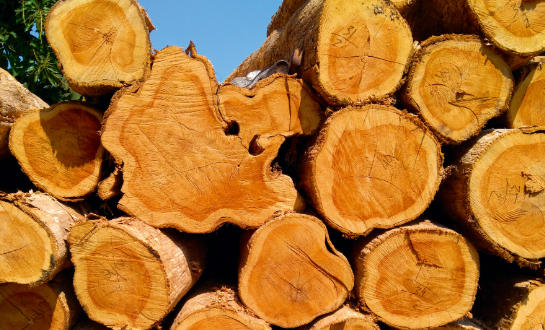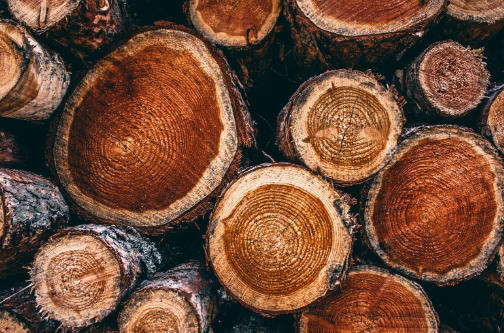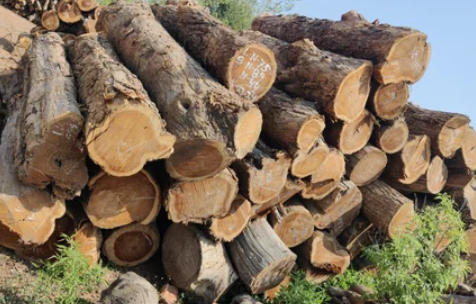










Content Menu
>> Benefits
● How Teak Oil Changes Wood Color
>> The Immediate Visual Impact
>> Chemical and Physical Processes
● Case Studies: Wood Species Response
>> Teak
● Teak Oil in Practice: Application, Effects, and Tips
>> Preparing for Teak Oil Treatment
>> Managing Splotchy or Streaky Results
● Outdoor vs. Indoor Wood: Longevity and Aesthetics
>> Outdoor Wood
>> Indoor Wood
● Scientific Analysis: Why Does Teak Oil Darken Wood?
>> Photodegradation and Extractives
>> Volatilization and Microstructure Changes
● Health, Sustainability, and Maintenance
>> Safety
>> Routine Care
● Common Teak Oil Problems and Solutions
>> Tung Oil
>> Linseed Oil
>> Teak Oil Always Darkens Wood
>> Teak Oil is Necessary for Outdoor Teak
● FAQ
>> 1. Does teak oil darken all woods equally?
>> 2. How can I prevent teak oil from making my wood too dark?
>> 3. Will teak oil make my furniture yellow over time?
>> 4. Should I use teak oil on outdoor furniture?
>> 5. How often should I reapply teak oil?
Teak oil stands out as a favored finish among woodworkers, homeowners, and furniture designers for its unique ability to both protect and beautify natural wood surfaces. The question “Does teak oil darken wood?” is not only common, but also crucial for anyone planning to treat their furniture, flooring, or outdoor décor. This in-depth guide explores the chemical mechanisms, practical application steps, long-term results, and user experiences related to teak oil's effects on wood color, helping readers choose the right finishing technique for their needs.[1][2][10]

Teak oil is a blend of natural oils (often including linseed or tung oil), resins, and solvents. Its formulas are engineered to penetrate hardwoods, enhance their grain, and shield surfaces against the elements. Contrary to its name, teak oil contains little to no oil from the teak tree itself. Instead, it is optimized for use on teak wood and similar dense species.[10][11]
- Deep penetration to nurture and protect the wood's interior fibers.
- Builds resistance to moisture, weather, and fading.
- Easy maintenance and reapplication.
Teak oil consistently darkens wood, amplifying the contrast and richness of its grain. This effect is especially notable on absorbent species, where even a single coat can transform pale, faded surfaces into vibrant, lustrous ones. The oil not only deepens the color but also brings out character details in the wood's pattern.[2][12][13]
Upon application, teak oil penetrates the wood's microscopic pores. It carries pigments and natural colorants which bond with lignin and cellulose, producing a stable color shift. As a result:
- Lighter hardwoods (like oak or ash) may darken moderately.
- Highly porous woods (such as teak and mahogany) absorb more oil and show pronounced darkening.[1]
- Multiple coats intensify the hue, while thin layers preserve a subtler effect.[2]
Recent studies using colorimetry and spectroscopy reveal that teak oil interacts with chromophoric compounds in wood. The process unfolds as follows:
- Initial darkening arises from oil migration and extractive compounds surfacing, creating brown stains.
- Sunlight and environmental exposure initiate photodegradation of lignin, resulting in both dark and golden tones depending on duration and light exposure.[3]
- The degradation of lignin forms carbonyl derivatives, further altering the visual spectrum toward reddish or yellow hues.
Teak wood is highly receptive to oil treatments. A fresh application yields a darker, richer surface, often transforming streaky or uneven mill cuts into an even, golden-brown finish. With outdoor exposure, the color softens over time as oil and pigments volatilize under UV rays, leading to a mellow, silver-grey patina.[5][1]
Both woods showcase vivid darkening effects after oil application. The grain stands out, while the surface develops a warm and inviting luster, making these species popular for luxury furniture and musical instruments.[10][2]
Pale woods such as ash or maple darken less dramatically. The oil mainly deepens the yellow and brown tones of the grain without causing a heavy color shift.[13][2]
- Sand wood surfaces with fine grit paper to open up pores.
- Wipe away dust and debris using a dry, lint-free cloth.
- Test oil on a small, inconspicuous section to preview the color shift and absorption tendencies.
1. Apply a thin, uniform layer of oil with a soft cloth or brush.
2. Allow the oil to penetrate for 10–20 minutes, then wipe off excess.
3. Let the wood dry completely before assessing the color.
4. For deeper hues, repeat the process, but avoid overapplication to prevent sticky build-up or blotching.[8][2]
- Limit oil exposure time and use thin coats to maintain a lighter shade.
- Select oil blends specifically formulated for minimal color change, or opt for water-based alternatives and wood waxes where color neutrality is desired.[11][14]
- Only reapply when the surface loses its luster, avoiding unnecessary build-up.
Improper technique or excessive oiling can produce dark streaks, patchiness, or areas prone to collecting dust and dirt. To avoid these pitfalls:
- Work in a dust-free environment, out of direct sunlight.
- Wipe off excess oil quickly.
- Rotate and inspect furniture for even absorption.[4][7]
Teak's natural resilience means outdoor pieces can be left untreated. Those seeking a golden-brown appearance may use teak oil, but should expect the finish to fade over time to a classic grey due to UV and moisture. Regular cleaning and occasional light sanding can refresh the surface before re-oiling.[15][1]
Indoor pieces retain their enhanced, glossy hue much longer. Oil finishes help resist spills and stains, providing both beauty and durability. Maintenance typically requires only annual reapplication, and dusting with a soft cloth.[2][10]

- Studies reveal that photodegradation of lignin and the migration of brown resinous extractives cause initial and progressive color darkening, with oils amplifying these changes.[3]
- UV exposure transforms the chemical makeup of the wood surface, first darkening, then mellowing it, and finally shifting toward golden yellow and silver over long periods.[1][3]
- Oil stains and volatile compounds fade with extended exposure, increasing overall lightness after the initial darkening phase.
- Microscopic analysis shows that oil may recede from surface fibers after several months, balancing the wood's final appearance.[3]
Modern teak oil blends are generally non-toxic and safe for regular interior use. Always ensure good ventilation during application and choose products with certified safety standards.[10]
- Many manufacturers now offer low-VOC formulas and water-based alternatives to minimize environmental impact.
- Untreated teak or finishes with natural beeswax are excellent choices for eco-conscious projects.
To maintain the desired look:
- Dust regularly with a soft, dry cloth.
- Clean spills promptly.
- Reapply teak oil only when the surface dulls, typically every 6–12 months for indoor wood, or annually outdoors.[2][10]
Teak oil, when applied to outdoor wood, can sometimes create conditions favorable to mold growth if exposed to persistent moisture. This is more common on less dense species treated with oil, especially in humid climates. Clean mold spots with a mild detergent, allow to dry thoroughly, and consider reducing oil application frequency.[6]
Splotchy patches and streaks may arise from uneven oil distribution or rapid, direct sun exposure during treatment. To prevent this:
- Ensure even sanding and oil spread.
- Work indoors or in shade.
- Wipe excess oil away within 15 minutes of application.[7]
Tung oil provides similar protection and grain enhancement, but generally results in a paler finish than teak oil. It's well-suited for surfaces where minimal color change is desired.[16]
Linseed oil is common in furniture and wood care products as it penetrates deeply and offers robust weather protection. However, linseed oil may also darken wood, though typically less intensively than teak oil.
For those seeking maximum color neutrality, water-based sealers and acrylic coatings protect wood without meaningful color alteration.[8][11]
Waxes and beeswax polishes can boost grain patterns without shifting the wood's hue. They are ideal for indoor collectibles or decorative objects that need a subtle sheen.
While teak oil often darkens wood, effects vary by species, current wood color, application technique, and environmental exposure. Small test applications remain essential.[13][2]
Natural teak is inherently resistant to rot and UV, making oil finishes an option rather than a requirement. Untreated teak develops a desirable silver patina that appeals to many users.[17]
Modern blends rarely cause pronounced yellowing. Slight warm tones may occur, but drastic color shifts are typically prevented by improved formulations.[18]
Teak oil is a powerful tool for beautifying and protecting wood, especially dense species like teak and mahogany. Its effect, reliably darkening and enriching the grain, brings both aesthetic and practical benefits for indoor and outdoor woodwork. To achieve the desired finish, users should focus on thin, even applications, preview results with sample tests, and maintain surfaces only as needed. Alternative finishes such as water-based sealers, tung oil, and waxes offer distinct color and protection profiles for unique use cases. Awareness of wood species, exposure conditions, and oil formulation ensures the final result aligns with both maintenance and design goals. Understanding these factors helps you choose the ideal approach for your furniture, deck, or artwork, delivering results that balance durability and beauty over the years.[12][11][8][3][10][1][2]

No. Teak oil darkens porous, absorbent woods like teak, mahogany, and walnut more than dense or closed-grain types. Always test on a small, hidden section to predict results.[13][2]
Apply thin coats, wipe away excess quickly, and test on hidden areas first. Consider water-based sealers, wax, or specialty products for minimal color change.[14][11]
Most modern teak oil blends do not cause significant yellowing, but a slight warm tone is possible depending on the oil's natural color. Always check product ingredients.[16][18]
It's optional for teak; untreated teak develops a silvery patina and is highly weather-resistant. Oiling is beneficial if a golden-brown finish is preferred, but minimal maintenance is needed.[20][17]
For outdoor furniture, annual reapplication suffices. For indoor wood, refresh only as needed—typically every 6–12 months, or when the surface loses its luster.[10][2]
[1](https://www.mcilvain.com/news/teak-decking-color-changes/)
[2](https://surfexfilm.uk/blog/does-teak-oil-darken-wood-full-guide-by-soif/)
[3](https://www.woodresearch.sk/wr/201904/06.pdf)
[4](https://www.reddit.com/r/woodworking/comments/lbqvc4/is_teak_oil_that_necessary_for_finishing_interior/)
[5](https://vermontwoodsstudios.com/pages/teak-wood)
[6](https://www.facebook.com/groups/woodworkingforbeginner/posts/3256577721163497/)
[7](https://captainspreferredproducts.com/blogs/learning-center/why-teak-oil-isnt-good-for-boats)
[8](https://www.rawlinspaints.com/blog/wood-oils-no-nonsense-guide/)
[9](https://www.mcilvain.com/news/teak-color-streaks/)
[10](https://www.diamondtropicalhardwoods.com/post/teak-oil-advantages-and-disadvantages)
[11](https://www.furnitureclinic.co.uk/blog/wood-oil-finishes/)
[12](https://www.furnitureclinic.co.uk/blog/what-is-teak-oil/)
[13](https://larkwoodfurniture.com.au/blogs/material-insights/teak-wood-furniture-everything-you-need-to-know)
[14](https://www.finewoodworking.com/forum/alternative-to-teak-oil)
[15](https://www.otazen.com/stories/teak-wood-colour-changes-indoors-vs-outdoors)
[16](https://www.teakmaster.com/blog/teak-oil-vs-tung-oil-which-is-better-for-wood-finishing/)
[17](https://teakanddeck.com/blog/teak-oil-for-outdoor-furniture/)
[18](https://www.facebook.com/groups/woodworkingforbeginner/posts/3069213649899906/)
[19](https://www.youtube.com/watch?v=A_M2t1FAC_0)
[20](https://www.sealitgreen.com/blogs/seal-it-green-blog/the-best-way-to-protect-teak-furniture-total-wood-armor-vs-teak-oil)